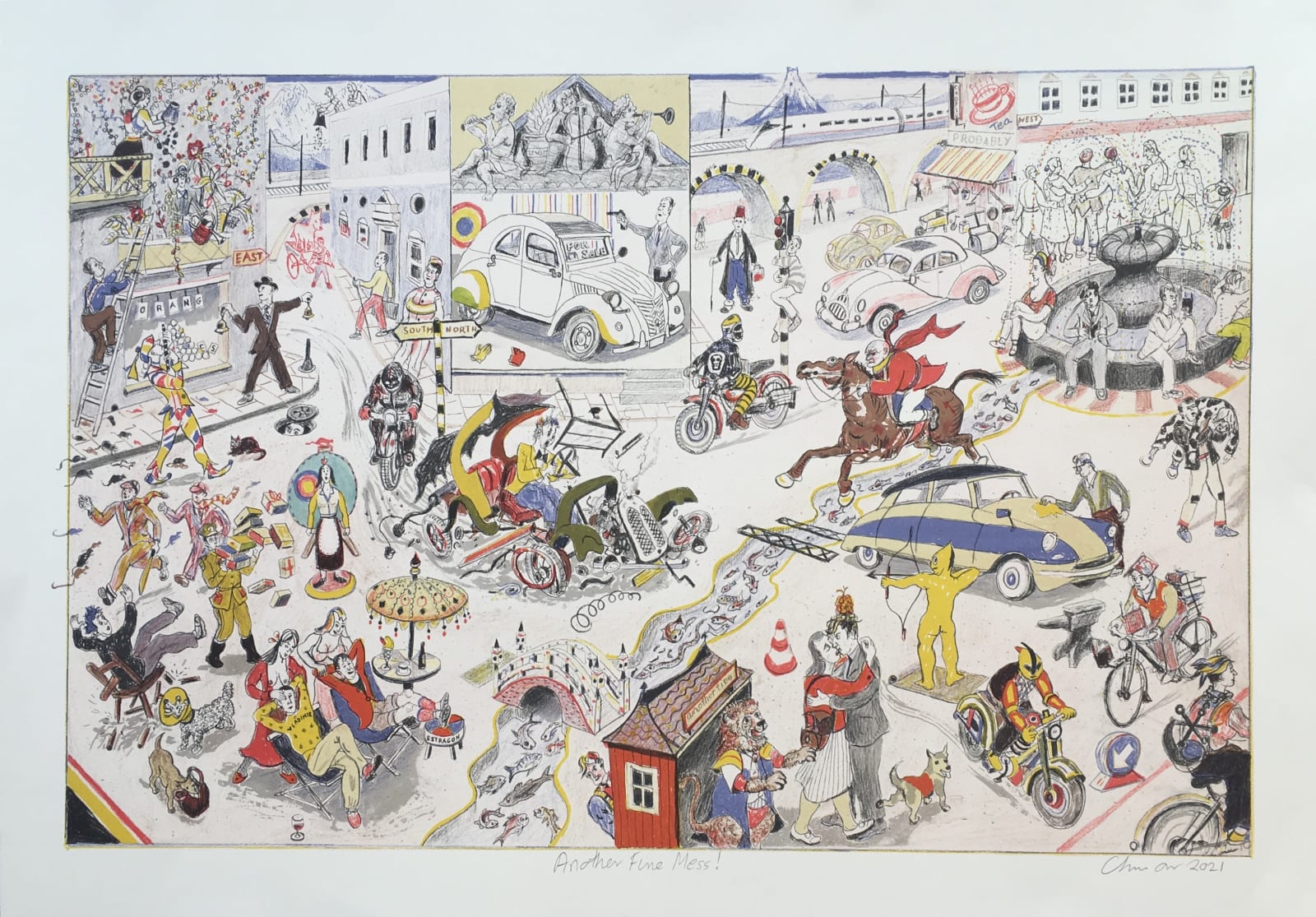Chris Orr
'Another Fine Mess!' - A signed, limited edition lithographic print by Chris Orr.
"I conceived of a sequel
to my 2020 lithograph “Crisis? What Crisis?” The feeling I had through the year
of Covid was that each day brought some new near disaster. I started drawing
after looking again at the film clips of Laurel and Hardy getting into a car
which totters, then completely disintegrates into a cloud of grey dust leaving our
heroes unharmed, perplexed and bemused. The world around L & H is very
fragile and yet they pass through it unscathed and only slightly ruffled. This
is optimistic. Whatever the world throws at you, you can survive.
In my picture the street
is a theatre. All over the place there are exits and entrances, open windows
into which we can glimpse little dramas, false starts and bad ends. The
narrative winds around the space lassoing ideas. The disintegrating car is only
the start of it. Here comes John Gilpin shewing how he went farther than he
intended and came safe home again. Here is the dare devil motorcyclist who rode
backwards. Here are Vladimir and Estragon resting after waiting for Godot.
There is the Pied Piper enticing the rats of different colours. North, South, East and West there is mayhem,
framed in good order.My work is a portmanteau, which contains a variety of
tricks. The sum total is a tapestry of near disaster. It never quite happens.
To paraphrase H.L.Menken; it serves to afflict the comfortable and to comfort
the afflicted.
My early appreciation
for narrative Art has remained the driving force, though the formal aspects of
picture making have come to play a major part. My earliest art heroes were
Giles, Heath Robinson, Roland Emmett, Ronald Searle and all those wonderful
children’s illustrators who enriched our lives. I went on to admire paintings
in the Tate Gallery and took a particular shine to Millais “Pretty baa lambs”
and “The Order of the Release”. I revelled in Turner’s “The fighting Temaraire
“. For me a picture had to be like a book. In the National Gallery I became
fascinated by Meindert Hobbema’s “The Avenue at Middleharnis” and it’s use of
perspective and spacial structures to take the eye for a walk through the
layers of the picture. Luckily, I overheard a lecturer explaining his use of
double vanishing points and atmospheric distancing. It was also said that this
painting was the most popular in the National Gallery, due to the fascination
people felt and the pleasure of making a journey with the mind and eye."
- Chris Orr, 2021
